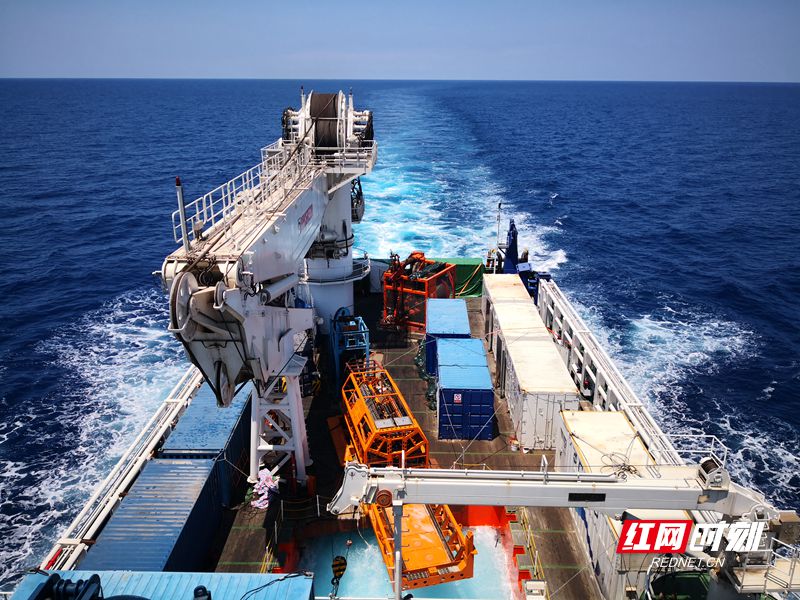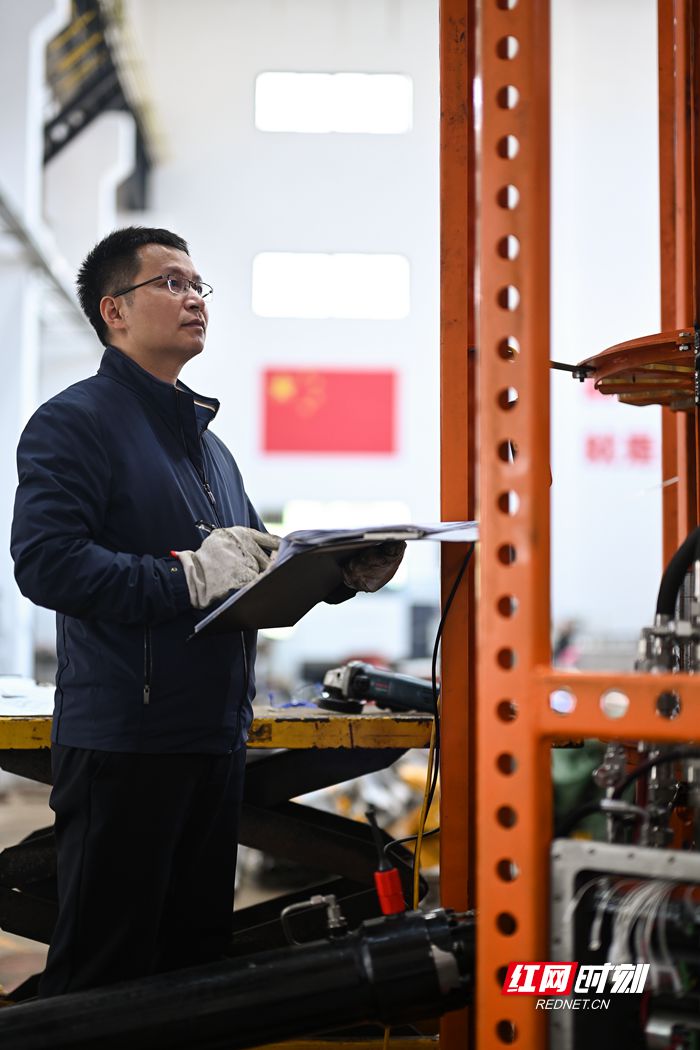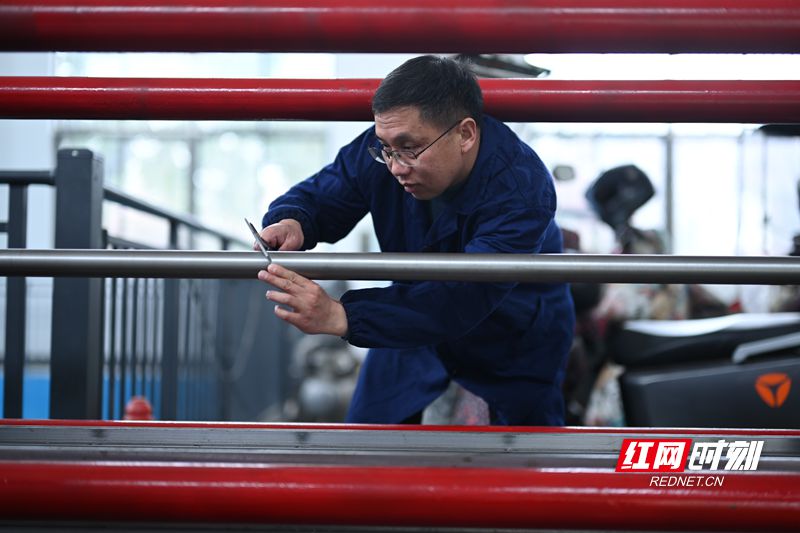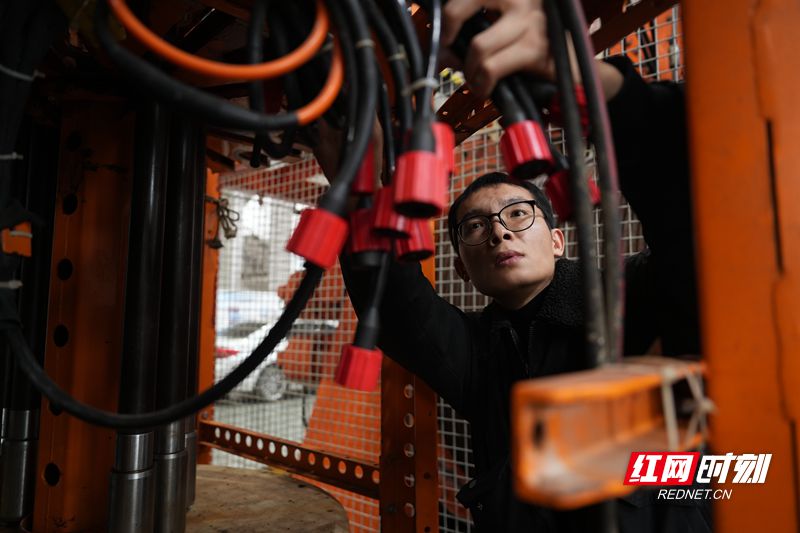
On the morning of March 7th, the Hunan delegation convened its third plenary session in the conference room on the third floor of the Guo’erzhao Hotel in Beijing. The meeting was open to Chinese and foreign media.
"The National Key Research and Development Program, Hai Niu III, has completed all key technology research and equipment prototype processing and manufacturing. The project will soon enter the assembly and commissioning phase, and we plan to start sea trials next year." On the opening day, Wan Buyan, Deputy to the National People's Congress, Director, Professor and doctoral supervisor at the Marine Laboratory of Hunan University of Science and Technology (HNUST), introduced the team’s latest research achievements. "If the results are successful, it means that we have achieved full coverage of human ocean drilling technology for the first time in the world."
From 0.7 meters to 231 meters, Wan Buyan,who has been engaged in scientific research for more than 30 years, led the advancement of China's deep sea drilling rig system from "Hai Niu" to "Hai Niu II" "Hai Niu III", successfully transforming from trailing behind to keeping pace and ultimately leading the way in deep-sea exploration. In the field of deepsea exploration, he has forged a uniquely Chinese path.

On the eve of the National Two Sessions (The Third Session of the 14th National People's Congress of the People's Republic of China and the Third Session of the 14th National Committee of the Chinese People's Political Consultative Conference) in 2025, the reporter of this news article traveled to Xiangtan and interviewed members of the core team of the Marine Laboratory of HNUST, uncovering the inspiring story behind Wan Buyan and his team.
In late February, members of the Hai Niu Laboratory team were conducting experiments in the deep-sea submarine drilling rig laboratory housed in the Hai Niu Building Not far away, a slogan in bold Chinese characters stood out: "Where the Nation Falls Short—That Is Where We Strive."
That morning, the reporter met Jin Yongping, Deputy Director, Professor and doctoral supervisor at the Marine laboratory of HNUST. From student to colleague, Jin Yongping has worked alongside Wanbu Yan for more than 10 years.

It had been over a year since the reporter last interviewed Professor Jin Yongping. When asked about the recent work of Representative Wan and his team, he smiled and said, "Right now we’re developing three new devices." One is the national key research and development plan project Hai Niu III, which has completed all key technology research and equipment prototype processing and manufacturing, and entered the assembly and debugged stage. The second is a self-propelled seabed drilling rig for polymetallic sulfides, which is undergoing key technical research and overall program design. The third initiative supported by the Hunan Provincial Science and Technology Department is a submarine engineering geological coring drill, and in-situ detection system which is under development.
Jin Yongping explained that compared with Hai Niu II, the operational depths of Hai Niu III will be deeper, and it can be adapted to any ocean depth worldwide. "During the development of the Hai Niu III, we have encountered many technical challenges, and we have made countless attempts to overcome them."
For example, the high-pressure transformer box and electronic cabin on the submarine drilling rig require comprehensive sealing solutions, including both static and dynamic seals. Moreover, the structures and shapes of these components vary, and in the ultra-high pressure environment, the seals are subjected to intense forces that can cause significant deformation. If the seal deformation becomes too great, the seal may fail. This is one of the most difficult problems during the development of Hai Niu III.
"We were already thinking about Hai Niu III when we were working on Hai Niu II." Jin Yongping acknowledged that Hai Niu III was approved as a national key research and development plan project in 2022, although the team started basic research on Hai Niu III as early as 2018. That year, the team began to do ultra-high pressure sealing experiments, including sealing structure design, sealing material selection, and sealing performance testing. They carried out hundreds of experiments, continuously refining their approach through experimentation, analysis, optimization, and improvement. Ultimately, they overcame the challenge in 2020.
Jin Yongping said, "Professor Wan is a scientist who single-mindedly pursues perfection in everything he does. He often says, 'To stay ahead in an industry, one must stay grounded, continuously delve into research, and constantly identify and solve problems.'"
"Never Yielding to Challenges"
On the morning of the interview, reporters meet Zhu Weiya, a core member and senior engineer of the Hunan University of Science and Technology's Marine Laboratory.

Under Zhu's guidance, the reporter arrived at an office building on campus. Zhu was one of four members whom Professor Wan Buyan recruited from the Changsha Institute of Mining Research to HNUST in 2010.
Settling into his seat, Zhu recalled his first encounter with professor Wan.
"After graduating with my degree in 2002, I visited a classmate who was working at the Changsha Institute of Mining Research that summer," Zhu said. During casual conversations, he learned about the Marine Research Institute. Intrigued by the field of ocean science, he applied for a position there.
That July , Zhu received a phone call from professor Wan. When Zhu arrived at the institute that day, he met Wan for the first time—a man in his thirties, already the director of the Marine Mining Research Institute, wearing large black-rimmed glasses. "His first question was: 'Can you adapt to frequent business trips?' I replied immediately, 'No problem.'"
At the time, deep-sea technology was still in its infancy. "With no precedents to follow, Professor Wan led us to start from scratch. We often worked until 1 or 2 a.m. After returning home, he’d continue brainstorming solutions and share them with us the next day. He’d never give up until he solved the problem."
To Zhu, professor Wan is someone who becomes completely absorbed in work. He has an exceptional memory and never yields to challenges.
In 2018, the HNUST Marine Laboratory team was commissioned by the Qingdao Institute of Marine Geology to conduct a gas hydrate exploration mission. The team spent 56 days at sea. Team member Xu Jingwei recalled that during the nearly two-month trial, they spent an entire month navigating around typhoons under harsh and unpredictable conditions. Still, professor Wan insisted on leading the trial, working around the clock. "After returning, we learned that Professor Wan’s father had passed away—he had received a call from the university while we were still at sea. Despite this, he prioritized the mission over personal loss, which deeply moved us."

Cultivating Talent for the Nation
Today, next to Hai Niu Building (HNUST’s deep-sea research hub), an annex for the Marine Resources Exploration Technology and Equipment Workshop is under construction.
Jin Yongping told reporters that currently, the team of Hunan University of Science and Technology's Marine Laboratory has over 50 members, including both faculty and students, the total number exceeds 100. Once completed, this four-story annex building will serve as the team's centralized office space.
To nurture future leaders, HNUST established the Future Technology College in 2021. In 2023, the college launched the Hai Niu Class, a pilot program recruiting top STEM (Science, Technology, Engineering, Mathematics) students to train the next generation to experts in deep-sea technology. Professor Wan serves as the head teacher.
Last year, HNUST introduced a new Marine Robotics major, aiming to drive innovation in ocean industries through exploration, scientific research, and resource development. "We’re building a seamless pipeline from bachelor to Ph.D. programs to attract outstanding students to our lab," Jin explained.
"Where the Nation Needs Us, We Stand Firm". This is the vision of the "Hai Niu" team—a reflection of China’s ambition and commitment to deep-sea exploration.
As the reporter stepped out of the Deep-Sea Drilling Rig Laboratory, a distant national flag hanging on the wall came into view, a quiet yet powerful symbol of the significance of professor Wan and his team’s decades-long dedication to the sea.
(Translated by TAN Jingni and LEI Ying)